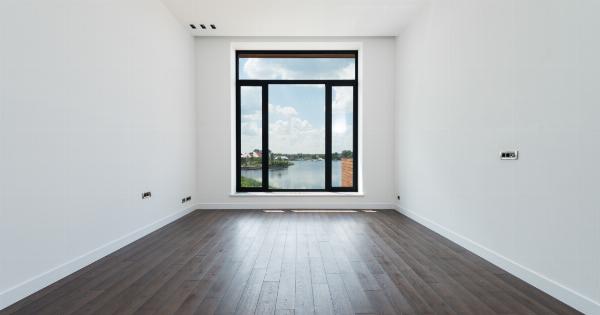Getting a good night’s sleep is essential for maintaining optimal health and well-being. The quality of your sleep is heavily influenced by your bedroom environment.
Creating a healthier space can significantly improve the quality of your sleep and leave you feeling refreshed and energized each morning. In this article, we will explore some tips for making your bedroom a healthier space to promote better sleep.
1. Keep Your Bedroom Clean and Tidy
Clutter and mess in your bedroom can contribute to feelings of stress and make it harder to relax. Keeping your bedroom clean and tidy can create a calming environment that promotes restful sleep.
Make it a habit to declutter regularly, organize your belongings, and keep surfaces clear.
2. Invest in Quality Bedding and Mattress
Your bedding and mattress play a crucial role in the quality of your sleep. Choose bedding that feels comfortable and promotes good airflow. Opt for materials that are breathable and hypoallergenic.
Additionally, invest in a mattress that provides adequate support and aligns with your sleep preferences.
3. Choose Soothing Colors
The colors in your bedroom can have a significant impact on your mood and sleep quality. Opt for calm, soothing colors like light blues, soft greens, or neutral tones. These colors can create a relaxing atmosphere and promote better sleep.
4. Control Lighting
Controlling lighting is essential for creating a sleep-friendly environment. Block out any external light sources that may disrupt your sleep, such as streetlights or sunlight. Use blackout curtains or blinds to ensure your bedroom remains dark.
Additionally, consider using dimmable lights or bedside lamps with warm, soft lighting for a more relaxed atmosphere before bedtime.
5. Minimize Noise
Noise pollution can significantly impact your sleep quality. If you live in a noisy environment, consider using earplugs or a white noise machine to drown out unwanted sounds.
You can also play soft, calming music or use a fan for background noise that can help mask disruptive sounds.
6. Maintain Optimal Temperature and Humidity
The temperature and humidity levels in your bedroom can greatly affect your comfort and sleep quality. Ideally, keep your bedroom temperature between 60 to 67 degrees Fahrenheit for optimal sleep.
Use fans or air conditioning during hot seasons and consider using a humidifier or dehumidifier, depending on your location and specific needs.
7. Banish Electronics
Electronic devices emit blue light, which can suppress the production of melatonin, a hormone that regulates sleep. Avoid using electronic devices such as smartphones, tablets, or laptops in bed.
Create a technology-free zone in your bedroom to encourage relaxation and better sleep.
8. Optimize Air Quality
Poor air quality can lead to respiratory issues, allergies, and disrupted sleep. Regularly ventilate your bedroom by opening windows or using an air purifier. Ensure proper airflow to prevent stuffiness and remove dust regularly to minimize allergens.
9. Create a Relaxation Corner
Designate a specific area in your bedroom as a relaxation corner. This can be a comfy chair or cushioned bench where you can sit and unwind before bedtime.
Use this space for reading, meditation, or any activity that helps you relax and prepare for a good night’s sleep.
10. Establish a Bedtime Routine
Establishing a consistent bedtime routine can signal to your body that it’s time to wind down and prepare for sleep.
Incorporate activities that help you relax, such as taking a warm bath, practicing yoga or deep breathing exercises, or reading a book. Stick to the routine every night to train your body to associate these activities with sleep.
Conclusion
Creating a healthier bedroom environment can significantly improve the quality of your sleep. Prioritize cleanliness, invest in quality bedding and a supportive mattress, and choose soothing colors to promote relaxation.
Control lighting, minimize noise, and maintain optimal temperature and humidity levels for a comfortable sleep environment. Banish electronics, optimize air quality, and create a designated relaxation corner. Finally, establish a consistent bedtime routine to signal to your body that it’s time for sleep.
By implementing these tips, you can transform your bedroom into a healthier space and enjoy better sleep each night.





























